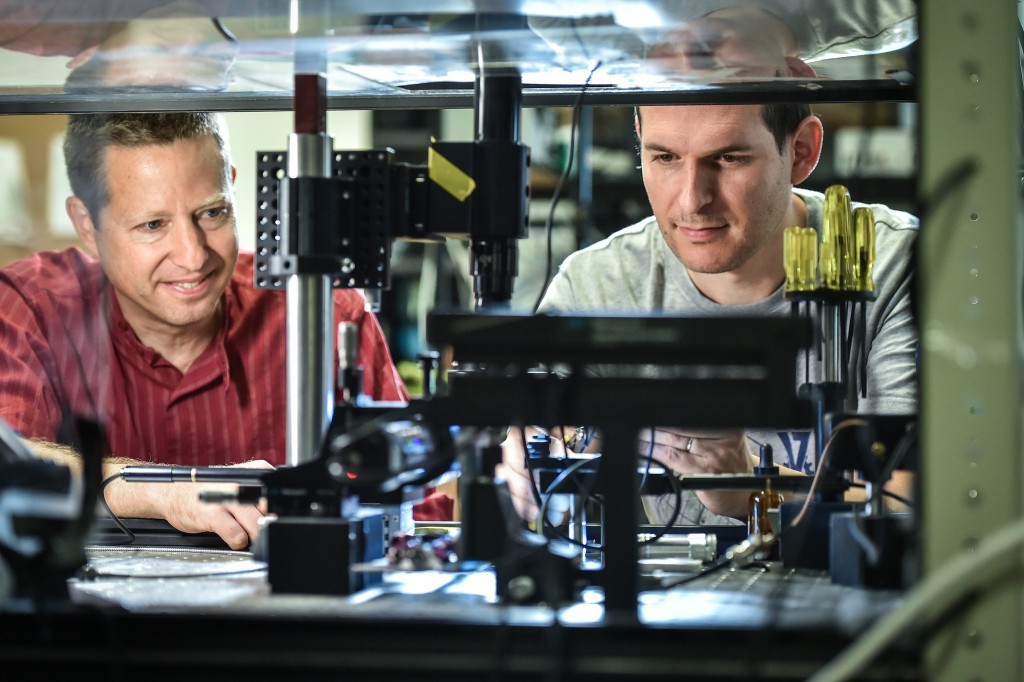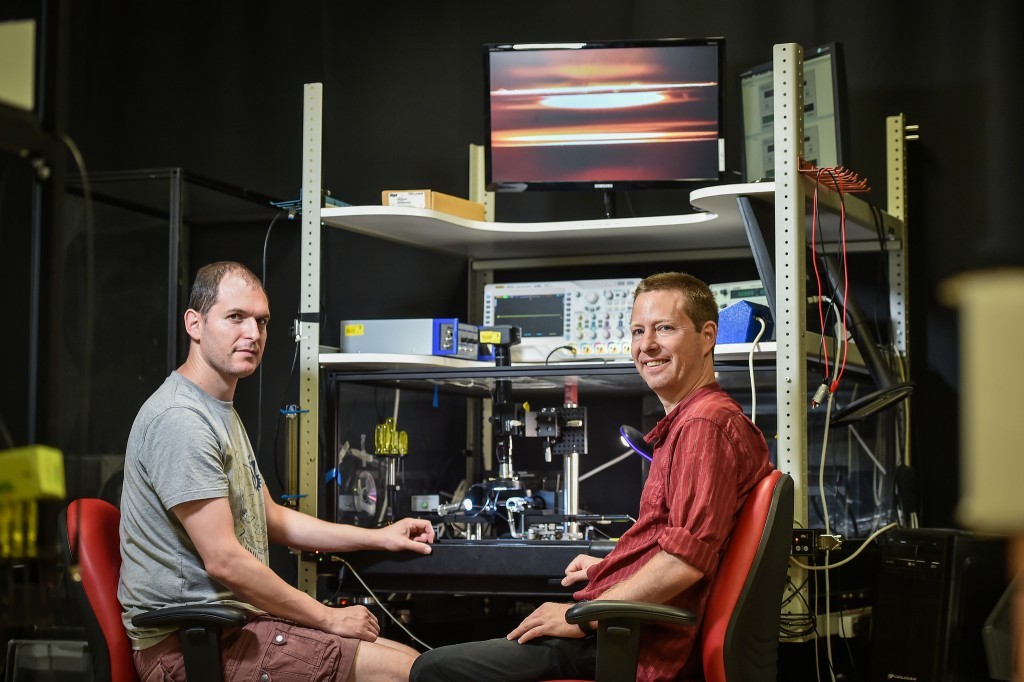Measuring oceans of activity in one drop of water
Technion scientists measure and record thermal motion in a water droplet; new kind of medical sensor may result
According to scientists from Technion-Israel Institute of Technology, measuring a water droplet with a resolution comparable with the scale of a single atom will reveal that the droplet interface behaves like a miniature stormy sea. The waves in this ocean are generally referred to as “thermal capillary waves” and they exist even if the droplet is seen, to the naked eye, as being at rest.
Using that knowledge, the researchers developed technology to analyze the thermal capillary dynamics in a drop of water. The advancement could one day lead to a new generation of medical sensors that are able to identify abnormal cells.
The findings by graduate student Shai Maayani and Professor Tal Carmon of the Technion Faculty of Mechanical Engineering were published in recent issue of Optica, available on-line at: https://www.osapublishing.org/optica/abstract.cfm?uri=optica-3-5-552
The measurement of thermal capillary waves, performed by Mr. Maayani was made possible by turning the water droplet into a device the researchers called an “opto-capillary resonator.” The device was used to introduce light into a water droplet to record the thermal capillary motion inside it. Being able to accurately measure this activity means that it could also be possible to support a controlled energy exchange between light and capillary waves in the drop.
 “The surface of a water drop is constantly moving, due to what is called ‘Brownian motion,’ or ‘thermal motion,’” said Prof. Carmon. “Thermal motion on the outer surface of a water droplet impacts many processes including breaking of a single drop into many smaller droplets.”
“The surface of a water drop is constantly moving, due to what is called ‘Brownian motion,’ or ‘thermal motion,’” said Prof. Carmon. “Thermal motion on the outer surface of a water droplet impacts many processes including breaking of a single drop into many smaller droplets.”
The researchers experimented with what are called “capillary oscillations” in a water droplet. These motions are governed by water‘s surface tension, the force that gives a drop of water its shape. Water droplets are a fundamental structure of self-contained liquid bounded almost completely by surfaces
In their experiment, photons (particles of light) were confined to circulate along the equatorial line of the droplet, at a depth of 180 billionth of a meter. Being so close to the drop interface, which host the thermal capillary waves, enabled recording this thermal motion of water.
According to the researchers, once inside the water droplet, light circulates up to 1,000 times around the circumference of the droplet, which helps in measuring the capillary waves. The number of times that light circulates is called ‘optical finesse’ and can be used to monitor the movements down to the size of 1/1000th of the very small wavelength of light.
“Optocapillary cavities can support a controlled energy exchange between light and capillaries,” explained the researchers.
When light waves and water waves co-resonate in certain ways – when they pass through one another – there can be an exchange of energy between the two types of waves. The data from that interaction could be used to develop a new type of sensor. For example, if a biological cell is placed into a water drop the cell’s reaction to waves – whether waves of light, water or sound – can reveal information about the nature of the cell.
“Based on a cell’s reaction to light, water and/or sound waves, it may one day be possible with the optocapillary resonator to determine whether a cell is normal or a malignant cancer cell,” concluded the researchers.



